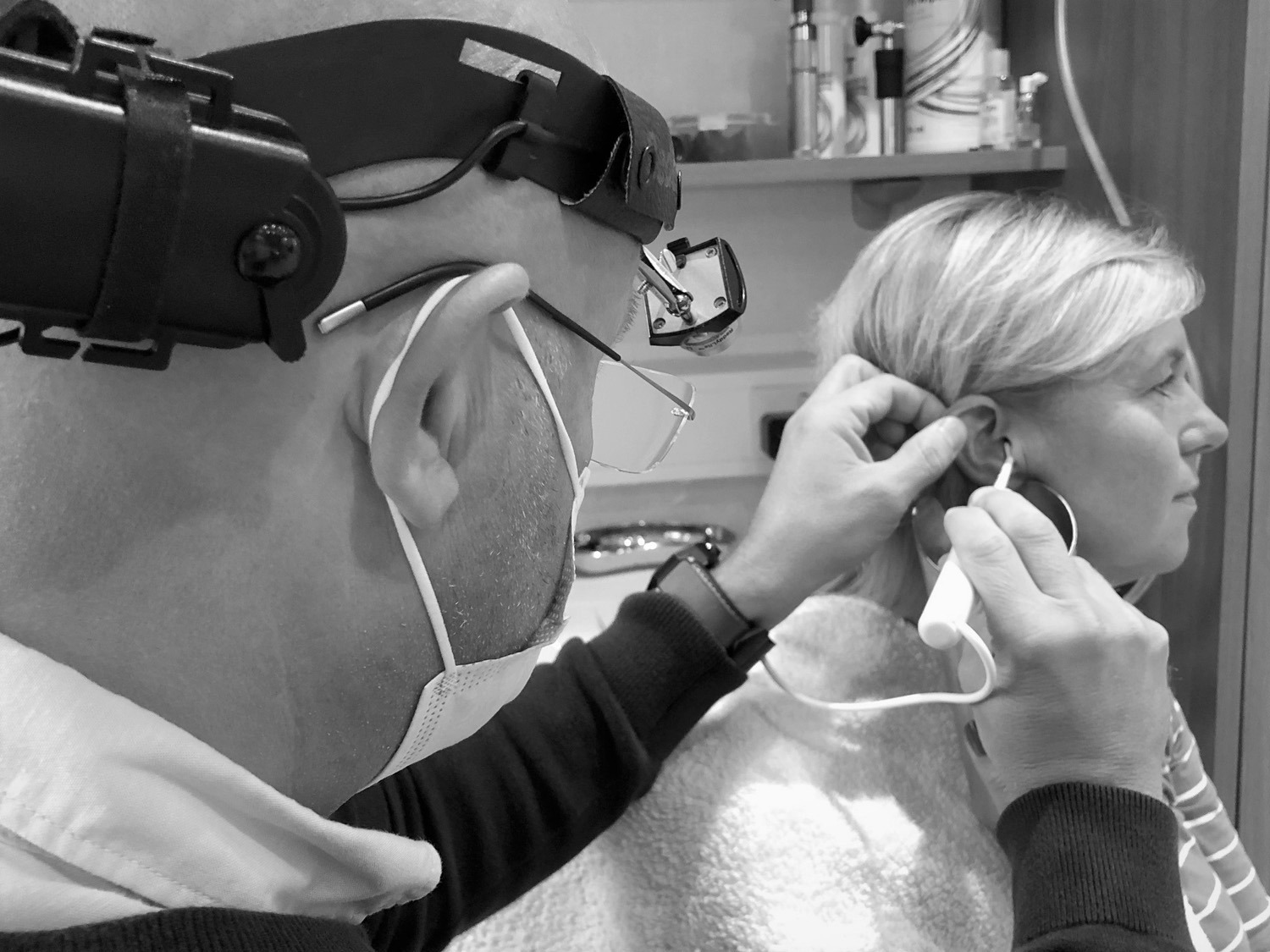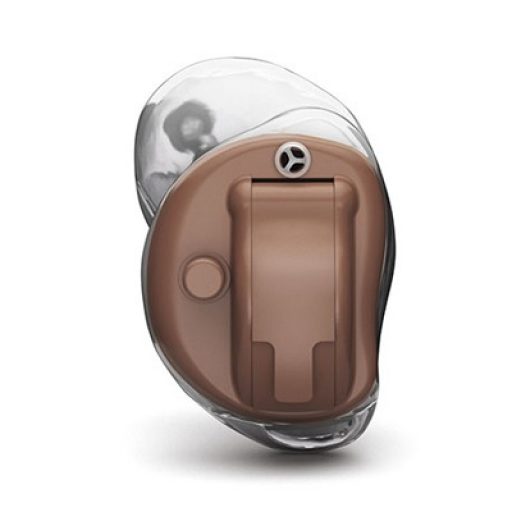FAQs
About hearing loss
Hearing impairment affects many people at different stages of their lives. 55% of people over 60 years of age have some degree of hearing loss, rising to over 70% of people by the time they reach 70 and 93% of people 81 years and older. This shows that if your hearing is deteriorating it isn’t unusual at all. Hearing loss can affect your quality of life and it’s never too late to do something about it, so if you have any concerns book an appointment for a free hearing test and talk to one of our qualified hearing aid audiologists who will be happy to help.
Most hearing loss is caused by the ageing process, however regular exposure to loud noises, heredity, and some illnesses can also cause hearing loss. Around 90% of all cases of hearing loss are because the microscopic hair cells in the cochlea (or inner ear) become damaged which limits their ability to detect soft, higher frequency sounds and means that they cannot send a complete signal to the brain. As a result, it becomes difficult to understand the consonants that allow us to understand speech. Also see How our hearing works and Types and causes of hearing loss.
The first sign of hearing loss is a difficulty in hearing certain sounds or tones clearly. For example, you may be unable to distinguish similar sounding words or hear higher pitched voices, such as those of children. Other signs include difficulty with cross-conversations, hearing at a distance such as in meetings, listening to the TV or radio, or hearing in large buildings where there may be echoes such as in churches or auditoriums. Also see Take our online hearing questionnaire and causes of hearing loss.
There may be many reasons for difficulty in discriminating speech from background noise and this is usually an indication of Sensorineural hearing loss. A hearing assessment will reveal the cause of this problem and properly prescribed and fitted hearing aids will normally provide significant improvement. Also see Types and causes of hearing loss.
It is generally accepted that a loss of hearing in old age is quite common. our hearing worsens with age. Not only have older people’s auditory system been exposed to noise for many years but also, as we age, all our facilities deteriorate, including our hearing. A free hearing test will quickly establish if you do have a hearing loss an age related hearing loss and our hearing aid audiologist will then be able to recommend suitable aids to improve your hearing. Regular hearing tests and Aftercare will ensure that any deterioration in your hearing is picked up quickly so that your hearing aids always provide you with the best possible hearing improvement.
Also see Take our online hearing questionnaire.
About hearing aids
This problem is called tinnitus and hearing aids can often help as people with a hearing loss often suffer from this condition. Your first step should be to seek the advice of your GP, however if you also have a hearing loss, then your hearing aid audiologist can prescribe suitable hearing aids that can help you manage your tinnitus more effectively.
Hearing aids detect and amplify sounds across a range of frequencies that are important in human hearing- mainly for hearing speech, but also for environmental sounds such as birds singing or the phone ringing. Simply put, sound is picked up by a microphone, amplified digitally and then sound is produced via a speaker. Hearing aids amplify different levels and pitches of sounds differently, depending on the degree and configuration of hearing loss. Modern hearing aids are all digital, and are becoming increasingly sophisticated at picking out speech from background noise, and delivering better sound quality.
We offer a wide range of hearing aids from the world’s leading manufacturers at prices to suit everyone’s budget. The cost of a hearing aid depends mainly on the type of hearing loss you have and the variety of different situations that your hearing aid will need to cope with. The more varied the situations and lifestyles, the more sophisticated the hearing aid’s technology needs to be. At your hearing test we will advise you on the various options available to you and the most appropriate level of technology required for your individual hearing loss and lifestyle.
Discover Hearing aid technology.
Earwax Removal
Earwax (also known as Cerumen) is produced by the ceruminous glands situated in the hair follicles at the entrance to the ear canal. The content of earwax is sebum (an oily substance containing amino acids-protein) combined with sweat from the apocrine sweat glands and keratin debris desquamated from the skin lining of the ear canal. The skin lining in the ear canal has unique self-cleaning properties of migrating out of the ear canal in a spiral path from the centre of the ear drum outwards. This is assisted through jaw movement and chewing. When earwax moves out towards the entrance of the ear canal, it will either dry up, flake away or even fall out or come away through general ablutions.
Ear wax is produced only in the outer third of the ear canal and assists in the cleaning and lubricating of the skin, thus reducing dry and itchy ears. Tests have shown earwax to also have antibacterial and antifungal properties.
Earwax contains lipids (fats) and glucose (sugar) and can be an effective medium for growth of bacteria when assaulted by water, providing the desired warm, moist environment and nutrient for growth.
Earwax will normally work its way out of the ears through a natural process called migration. This is helped by normal mandibular jaw movements such as chewing and talking. As a result, most people do not require their ears to be cleaned.
However, each individual has uniquely shaped ears and some people maybe more susceptible to earwax build up then others. For instance, wearing hearing aids can interfere with the natural migration process, and those who have narrow or hairy ear canals maybe at more risk. Earwax is also more common among older adults due to the consistency of wax changing with age.
One of the biggest contributors to excessive earwax build up or compacted wax is self-cleaning. Cotton bud usage or other implements pushed into the ear canal can cause the already naturally forming earwax to be pushed together to form a blockage. The skin in the ear is also some of the thinnest skin on the human body so it is also very easy to cause trauma by inserting objects into the ear, which can lead to infections. We have all heard the saying ‘never put anything in your ear smaller than your elbow’.
Some people have tried Hopi Ear Candles as a method of wax removal. These are strongly disclaimed by the NHS and they have no scientific evidence to support their effectiveness and in some have been known to be dangerous.
If you are suffering from earwax blocking the ears, then contact your local hearing centre for advice from our qualified clinical ear care practitioner.
General FAQs
If you were happy with the service and assistance you received from us or if there are ways you think we could improve, we would love to hear from you.
You can leave a Google Review at any of our centres, to do this you can read instructions here.
Alternatively, you can pop an email with your feedback to us info@soundadvicehearing.co.uk
Get a free hearing test with one of the UK's best hearing care specialists

Book a FREE hearing test

FREE online hearing test

Find your nearest clinic

